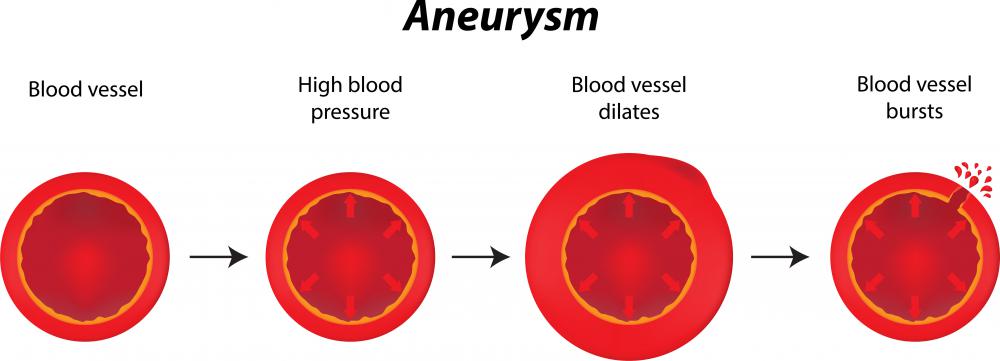At WiseGEEK, we're committed to delivering accurate, trustworthy information. Our expert-authored content is rigorously fact-checked and sourced from credible authorities. Discover how we uphold the highest standards in providing you with reliable knowledge.
What Is the Subdural Space?
Subdural space, also called the subdural cavity, is a fluid-filled anatomical gap between the arachnoid and dura mater. The space is created by trauma or pathological conditions, and cerebrospinal fluid and blood can leak into the space, creating physiological problems. The creation of a subdural space, in and of itself, is not a problem, as the layers can move back towards each other after the trauma has ended. Side effects of the trauma, such as a subdural hematoma, are what can create issues in the region. In addition, doctors performing injections in the area can make mistakes due to the unexpected gap.
The brain and spine are protected by meninges with layers called maters. Pia mater is closest to the brain and spine, arachnoid mater is in the middle, and dura mater is the outermost layer. Subdural space is a potential gap that can open between the outer two layers.

A potential physiological space is possible, but only through a pathological change of some kind. Under normal conditions, the dura and arachnoid layers are pressed tightly together. There aren't any nerves or tendrils physically connecting the layers. When there is trauma to the head or spine, these unattached layers can move apart and form a subdural space.

Fluid can seep into the gaping area. Cerebrospinal fluid is a cushioning liquid normally found between the pia and arachnoid maters. The space between the pia and arachnoid layers is also potential. Trauma can cause a split between them, allowing the fluid to leak through, or, in a dead body, the dehydration of the fluid can cause the subdural space.
Studies have suggested that a leak of cerebrospinal fluid can also increase the chances of a subdural hematoma. Blood can gather in the subdural space due to injury, an aneurysm, or a pathological bleeding condition. The blood can clot in the space and cause a hematoma, which increases pressure on the brain. Acute hematomas will usually be absorbed back into the body though severe cases may require surgery.
Doctors need to use caution when performing injections into the subarachnoid layer. Injections are typically made to this area for radiation or anesthetic purposes. Failure to notice that there is a gap present can lead to the injection material being released into the space instead of the membrane layer. This can lead to an inadequate concentration of the injection material prior to the procedure.
AS FEATURED ON:
AS FEATURED ON:












Discuss this Article
Post your comments